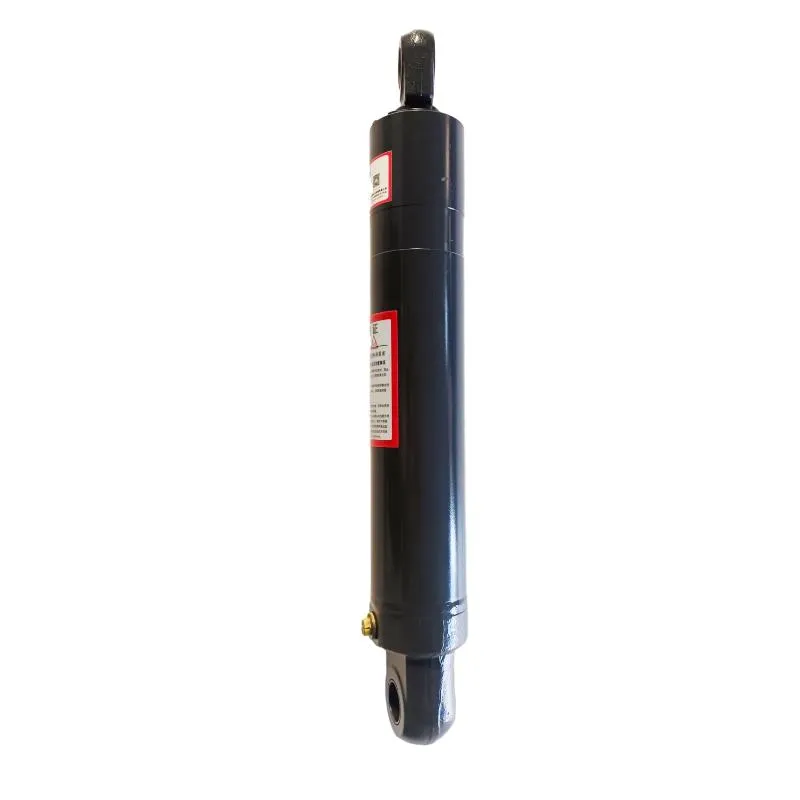Oct . 03, 2024 07:17 Back to list
Hydraulic Cylinder Solutions for Efficient Column Load Management in Industry
Understanding Column Load in Hydraulic Cylinder Applications
Hydraulic cylinders are pivotal components in many industrial applications, serving as the mechanical muscles that provide the necessary force to lift, push, or pull heavy objects. One crucial aspect of hydraulic cylinder design and functionality is the concept of column load. This term refers to the axial load that a hydraulic cylinder can support when aligned vertically, a critical factor that influences safety, efficiency, and operational reliability.
What is Column Load?
Column load, in the context of hydraulic cylinders, pertains to the maximum load that the cylinder can withstand in a vertical position without buckling or failing. It is essential to consider this measurement because it directly affects the performance of machinery and equipment that relies on hydraulic systems. Buckling is a failure mode that occurs when the load exceeds a certain threshold, causing the cylinder to deform or collapse.
Factors Influencing Column Load Capacity 1. Cylinder Design The design of the hydraulic cylinder—its length, diameter, and material composition—greatly impacts its column load capacity. A shorter cylinder will typically have a higher load capacity than a longer cylinder of the same diameter and material, due to the latter's increased susceptibility to buckling.
2. Material Properties The material from which the hydraulic cylinder is made plays a vital role in determining its overall strength. High-tensile materials such as steel or aluminum alloys are commonly used to enhance load-bearing capacity while minimizing weight.
3. Pressure Ratings Hydraulic cylinders operate under various pressure conditions. Understanding the maximum pressure rating is essential, as it helps determine how much load the cylinder can support without risk of malfunction. Higher pressure ratings often allow for heavier loads, but design factors must also be considered to prevent failure.
4. Load Distribution The way a load is distributed along the cylinder can influence its stability. Unevenly distributed loads can create additional stress that might exceed the cylinder's column load capacity, leading to buckling or other failures.
Calculating Column Load Capacity
Engineers use the Euler’s buckling formula to calculate the critical load at which a cylindrical structure will buckle under compression. The formula involves several parameters, including the length of the cylinder, the moment of inertia (related to the cylinder's cross-section), and the material's Young's modulus.
column load hydraulic cylinder company

The formula is as follows
\[ P_{cr} = \frac{\pi^2 E I}{(KL)^2} \]
Where
- \( P_{cr} \) is the critical load, - \( E \) is the material’s Young's modulus, - \( I \) is the moment of inertia, - \( K \) is the column effective length factor (depends on how the column is supported), - \( L \) is the actual length of the column.
Applications of Column Load Considerations
Understanding column load capacity is crucial across various industries where hydraulic cylinders are employed. For example, in construction and material handling, cranes and lifts depend on properly sized and rated hydraulic cylinders to lift heavy materials safely. Similarly, in manufacturing, precision machinery relies on hydraulic systems for accurate and consistent operation.
Conclusion
The importance of column load in hydraulic cylinder applications cannot be overstated. It is a critical parameter that engineers and designers must carefully analyze to ensure the safety and efficiency of hydraulic systems. By considering factors such as design, material properties, pressure ratings, and load distribution, companies can select the appropriate hydraulic cylinders that meet their specific operational needs and prevent potential failures.
As industries evolve and demand for more robust lifting solutions increases, the design and optimization of hydraulic cylinders will continue to be an area of focus, ensuring reliability and safety in all applications. By investing in research and development, hydraulic cylinder manufacturers can enhance column load capacities and overall performance, paving the way for more advanced machinery and improved operational outcomes.
-
Fork Lift Power Units - Hebei Shenghan | Efficiency, Reliability
NewsJul.13,2025
-
1.5-Ton Turbocharged Cylinder-Hebei Shenghan|Hydraulic Solution,Energy Efficiency
NewsJul.13,2025
-
Auto Hoist Power Units-Hebei Shenghan|Efficiency&Industrial Lifting
NewsJul.13,2025
-
Double Acting Power Units-Hebei Shenghan|Hydraulic Solutions,Industrial Efficiency
NewsJul.13,2025
-
1.5 Ton Lifting Cylinder 70/82-40-290-535 - High-Performance Hydraulic Solution | Hebei Shenghan
NewsJul.13,2025
-
Fork Lift Power Units - Hebei Shenghan | Efficiency&Reliability
NewsJul.13,2025
